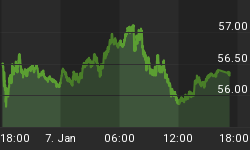Net foreign capital flows into the US rose 36% to $69.6 bln in May from a revised $51.1 bln in April (initial was $46.7 bln). The $51.1 bln in net capital flows sufficiently covered the $63.4 billion trade deficit for the corresponding month.
The two main contributors to the 36% increase in the May TICS report were:
- $26.7 bln increase in net purchases of US treasuries by private investors (non official) and;
- $14.2 bln in net selling of foreign bonds by US residents. But as we see below, foreign investors did reduce their purchases of US stocks to 9-month lows.
The May TICS figure overshot our forecast of $35 bln as we expected the 2.6% decline in the dollar's trade weighted and the 3.1% drop in the S&P 500 to have triggered further selling of US assets by foreign investors after initially selling in April.
POSITIVES
-
Net purchases of US Treasuries shot up 292% to a 3-month high of $13.2 bln, thanks to a 420% jump in net purchases of private accounts (usually hedge funds) to $26.7 bln. It was the highest monthly net purchase since November 2005.
-
Net foreign purchases of US Agency bonds rose 137% to an all time high of $36.4 bln, after declines in the prior 2 months. Corporate bonds saw a more modest increase to $36.5 bln.
-
The biggest positive contributor to the May capital flows data was the sharp net selling by US residents in foreign bonds of $14.3 bln, the highest net sale since September. This figure added et foreign purchases of US Agencies rose 137% to an all time high of $36.4 bln, after declines in the prior 2 months. Corporate bonds saw a more modest increase to $36.5 bln.
NEGATIVES
- US Treasuries saw net selling of $14.3 bln by official accounts (foreign central banks), the biggest net sale by these accounts since August 1998, the month of the worst emerging market crisis in history (see chart below). Just as central banks are profit maximizers aiming at reaping the benefits of currency and yield returns, they also exercise notable risk averseness when the US dollar dropped 2.3% against the euro in May, hitting its lowest level in a year.

-
Net foreign purchases of US stocks tumbled 59% to $2.7 bln, the lowest since August 2005. Considering the ensuing 2.8% decline in the S&P500 between June 1st and June 28th, we could expect a net outflow from US equities in the June TICS report due next month.
-
US residents further eased their selling of 39% to $4.9 bln as investors sought to diversify their portfolios, by moving their holdings into international equities in light of the domestic sell-off.
-
Japanese holdings of US Treasuries fell 0.2% to $637.9 bln (see chart), nearly matching the low from February 2004. The increasingly evident downward trend in Japan's holdings should continue, especially in light of the approaching end of the Fed's tightening and further future increases in Japanese, European and Australian interest rates.

The key question leading to Fed Chairman Bernanke's semi annual Congressional testimony is whether the Chairman will echo the slight downgrade in economic assessment of the June 29 FOMC statement and the extent to which he will sound off the Fed's inflation alert. The downside risk for the dollar looms large in the event that Bernanke opens his testimony via an unambiguous statement regarding the moderation of economic growth and a toning down of the Fed's inflation preoccupation. The June FOMC statement's inflation assessment was negligibly revised to "Readings on core inflation have been elevated in recent months", from the May FOMC statement's: "...the run-up in the prices of energy and other commodities appears to have had only a modest effect on core inflation". Considering the light retreat in the prices/inflation indices of the latest ISMs, Chicago PMI and University of Michigan Consumer Sentiment, Mr. Bernanke may temper his inflation assessment.
More importantly, considering that Bernanke will have the June CPI report on hand by 5 pm EST Tuesday, his inflation assessment in Wednesday's testimony will in part be in function of the CPI report and in part in function of the Fed's overall interpretation of price and wage indices.
But it's worth mentioning that even if the June core CPI echoes its PPI counterpart and retreats to the more bond market friendly 0.2% reading, the Fed's inflation outlook shall remain obstructed by the uncertain prospects for the already soaring oil prices in light of the escalating Mideast violence. So far, the only semblance of a near-term pause of attacks by Israel has come from Media speculation and not Israel itself. As long as Israel declares it will not negotiate with Hezbollah and the latter vows to continue fighting back, the outlook for lower oil prices remains uncertain.
For currency markets, the following questions stand at the top of traders' priorities:
-
To what extent will Bernanke balance the risks of further increases in oil prices, and accentuate the moderation in US economic growth?
-
More specifically for FX, the dollar's upside prospects will be dissected across the treasury-bound safe haven flows on one side, and the dollar's high cost of carry as well as prospects for an August hike on the other side.
Despite the dollar's considerable cost of carry, we should not undermine the role of the market reaction in the event the Fed signals an August pause. Recall how the discreet downgrade in economic assessment of the June 29 FOMC statement dragged down the dollar by over 2% vs. the euro and the yen in less than 3 days. A similar downgrade in Bernanke's testimony and the Fed's economic projections could trigger fresh dollar selling, especially given future rate hikes by the European Central Bank, Bank of England, Bank of Japan and Reserve Bank of Australia.
















